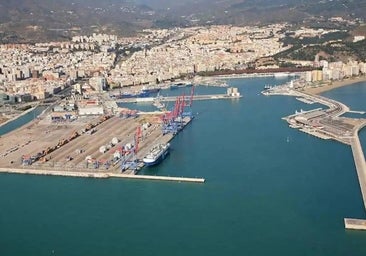Junta moves forward with portable desalination project to fight drought
Mobile equipment will be used in Estepona, Vélez-Málaga and Fuengirola to treat brackish well waters while Marbella's plant is being expanded
Ignacio Lillo
Malaga
Wednesday, 6 December 2023
The latest plans announced by the president of the Andalusian regional government, Juanma Moreno, to help combat the drought situation in Andalucía are beginning to take shape. The star measure within the new strategy, labelled 'Sequía plus' (Drought plus), is the installation of mobile emergency desalination plants at different points along the Costa del Sol from Estepona to Vélez-Málaga.
The strategy is being rolled out by the regional ministry of Agriculture, Fisheries, Water and Rural Development, whose head, Carmen Crespo, offered further details on Monday after its approval in Seville.
In Marbella, the only place on the Costa del Sol which already has a permanent desalination plant in operation, work is already under way to increase the capacity of this plant from six to 12 cubic hectometres of annual production; this phase will be ready next spring.
Now the aim is to continue increasing water production up to 20 cubic hectometres, for which two options are being analysed: one is to link the existing plant to one of these mobile desalination plants; the other is to increase the membranes which filter the water in the existing plant.
"We are studying the best solution to produce the water as soon as possible," Crespo said.
The other portable equipment, on the other hand, would be used to treat brackish water from wells to make it suitable for human consumption.
To this end, mobile desalination plants are planned for El Trapiche, in the Axarquía; Guadalmansa in Estepona; and Fuengirola. Each of these could provide four cubic hectometres a year.
"The Port of Malaga is already prepared to receive them, it has this mechanism in place," Crespo said. But the regional minister added that this would be a last-resort option, as the cost of shipping this water would be around 10 million euros per month.
Another of the main measures included in the Junta's new drought decree, which will be approved in January, is to resume use of old boreholes and wells, such as those of Fahala and Aljaima, in the Guadalhorce valley.
These will provide 10 cubic hectometres of "high quality water that will be injected directly into the system in the short term", Crespo said.
Work is also planned for the lower Guadalhorce boreholes (in this case, the brackish water will need to be treated at the El Atabal water treatment plant); for the Sierra Tejeda and Almijara area; and the River Guadiaro.
There is also a lower Guadalhorce project for the artificial recharge of aquifers with water that has received tertiary treatment.
Meanwhile at La Viñuela reservoir work is under way to make use of the remaining muddy reserves.
The 'Sequía plus' strategy has a five to six month timeline, with short, medium and long-term measures.
"The situation is not improving and the rain is not reaching the Mediterranean basins. 2024 is going to be a difficult year because the situation is extreme," Carmen Crespo said

